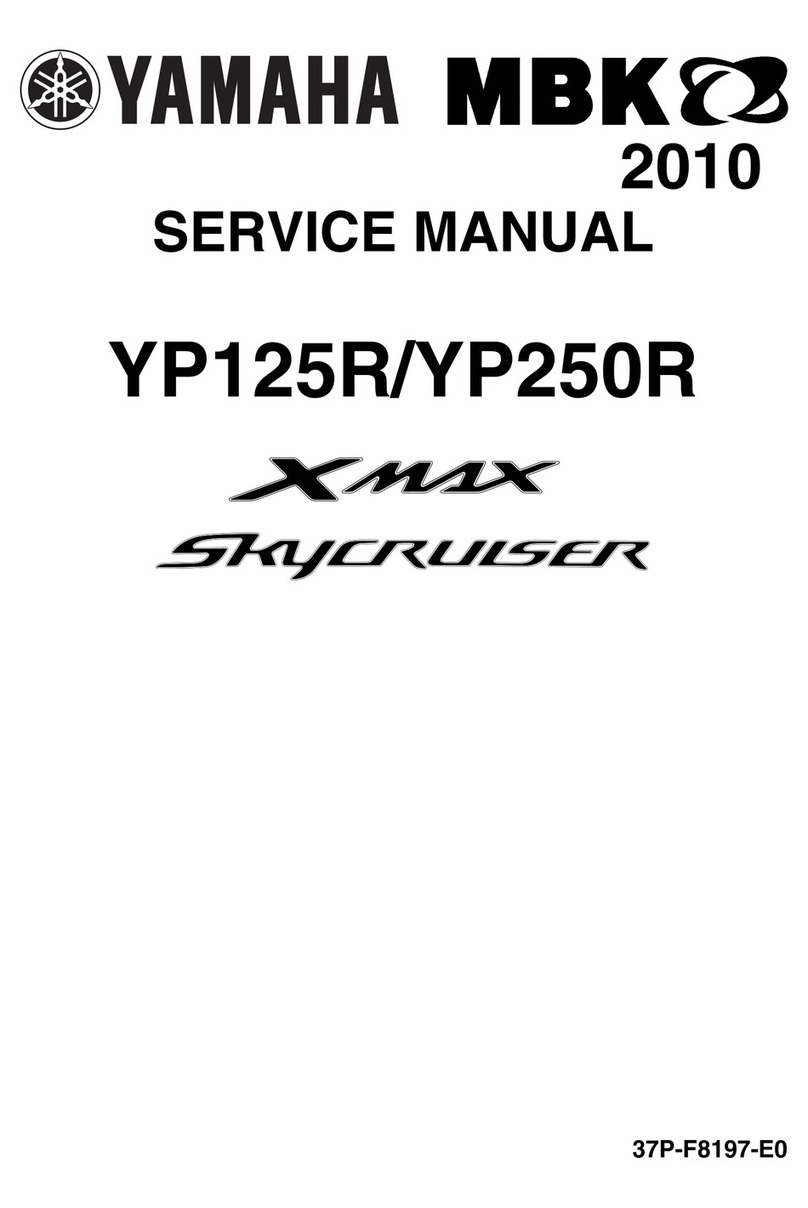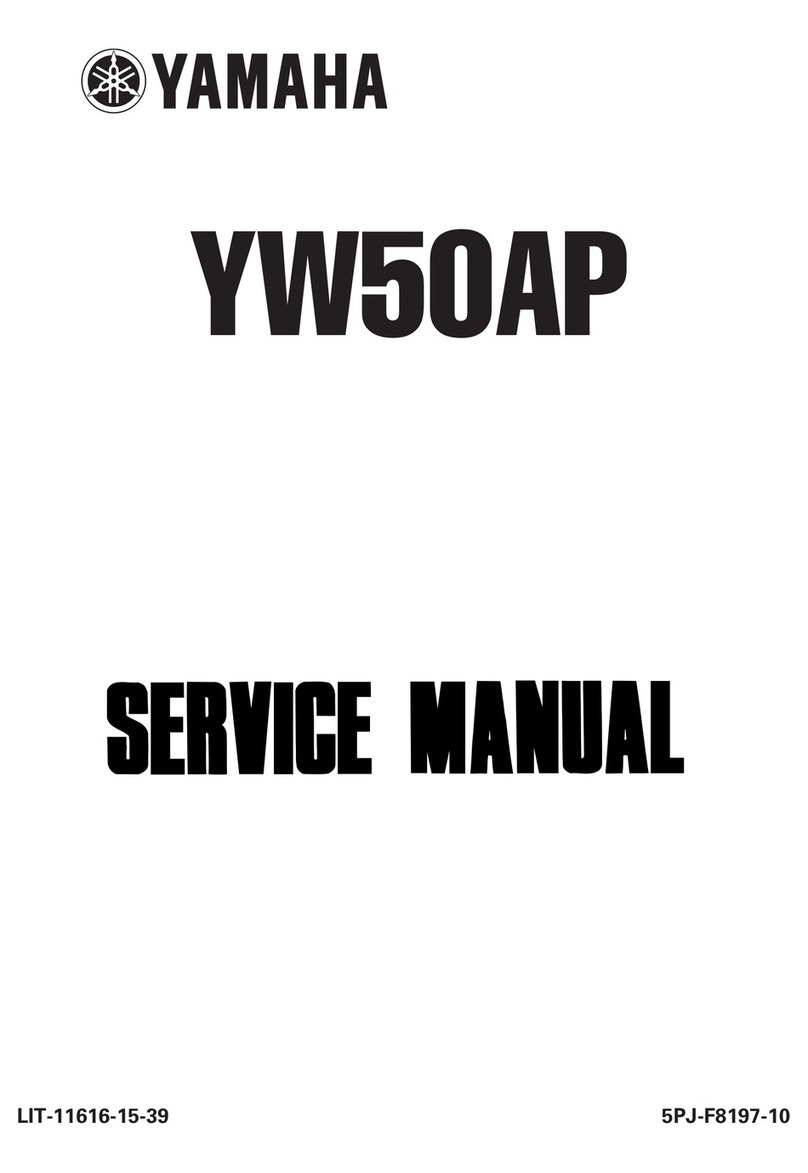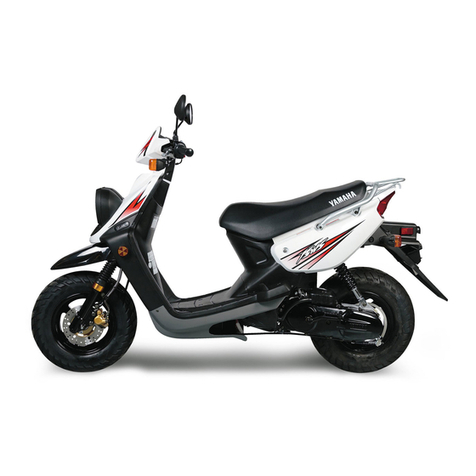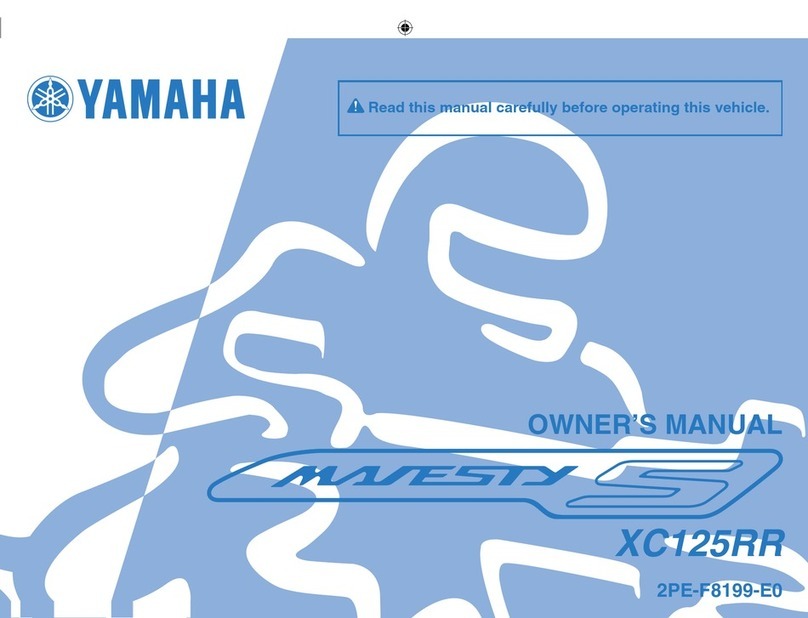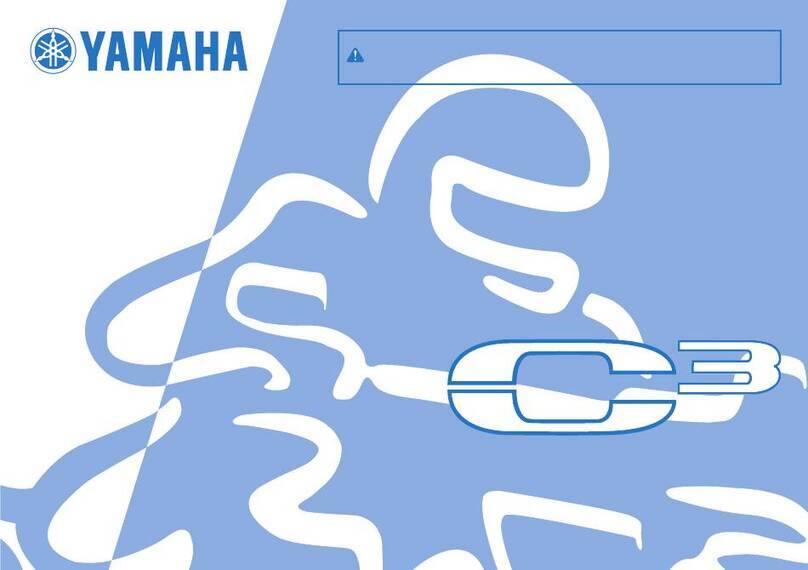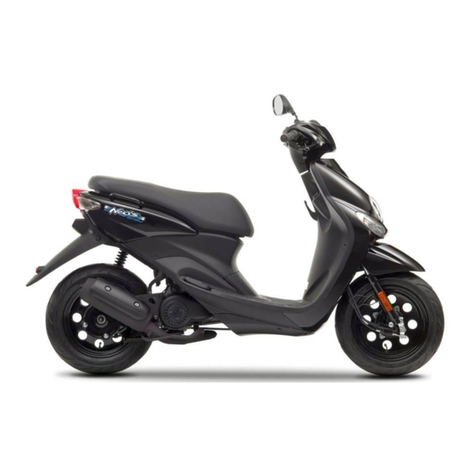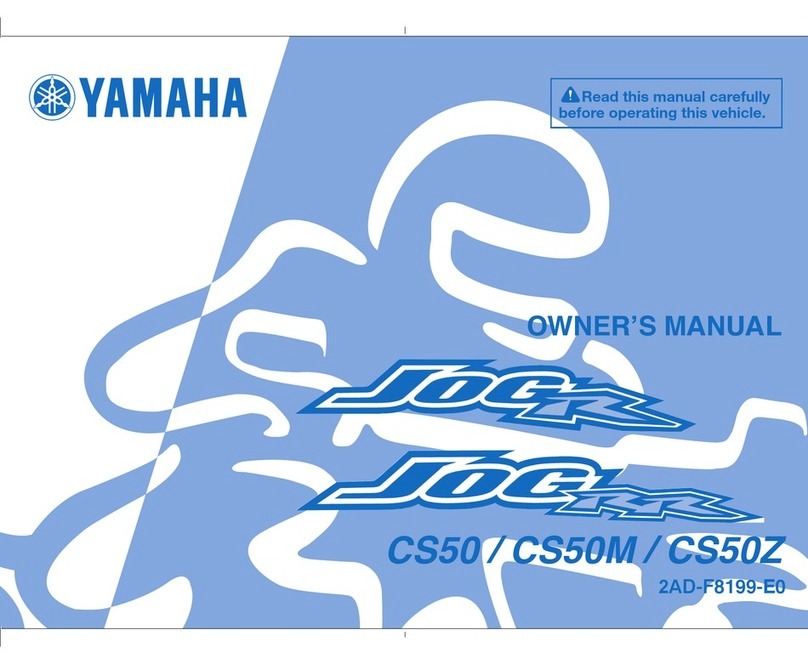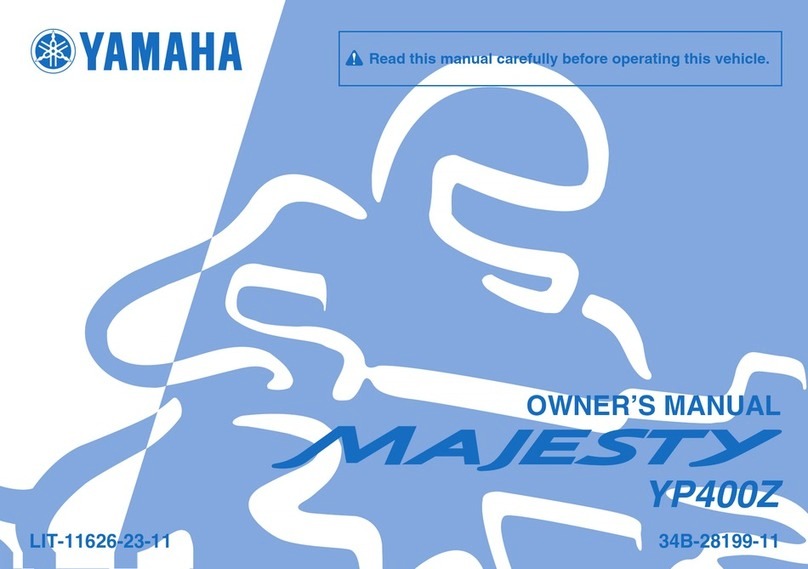
TABLE OF CONTENTS
LOCATION OF IMPORTANT
LABELS .............................................. 1-1
SAFETY INFORMATION .................... 1-3
Further safe-riding points ................. 1-7
DESCRIPTION.................................... 2-1
Left view........................................... 2-1
Right view......................................... 2-2
Controls and instruments ................. 2-3
INSTRUMENT AND CONTROL
FUNCTIONS........................................ 3-1
Main switch/steering lock ................. 3-1
Keyhole cover .................................. 3-2
Indicator and warning lights ............. 3-2
Speedometer unit............................. 3-3
Fuel gauge ....................................... 3-4
Handlebar switches.......................... 3-4
Front brake lever.............................. 3-5
Rear brake lever............................... 3-5
Fuel tank cap.................................... 3-6
Fuel .................................................. 3-6
Catalytic converters.......................... 3-8
Seat.................................................. 3-8
Helmet holder................................... 3-9
Storage compartments................... 3-10
Carrier ............................................ 3-11
Luggage holder .............................. 3-11
FOR YOUR SAFETY - PRE-OPERATION
CHECKS ............................................. 4-1
OPERATION AND IMPORTANT RIDING
POINTS ............................................... 5-1
Starting a cold engine ...................... 5-1
Starting off........................................ 5-2
Acceleration and deceleration.......... 5-2
Braking............................................. 5-2
Tips for reducing fuel consumption .. 5-3
Engine break-in................................ 5-3
Parking............................................. 5-4
PERIODIC MAINTENANCE AND AD-
JUSTMENT ......................................... 6-1
Periodic maintenance chart for the
emission control system ............... 6-2
General maintenance and lubrication
chart.............................................. 6-4
Removing and installing panels ....... 6-8
Checking the spark plug................... 6-9
Engine oil and oil strainer............... 6-10
Final transmission oil...................... 6-12
Coolant........................................... 6-13
Replacing the air filter element and
cleaning the check hose ............. 6-15
Checking the engine idling
speed.......................................... 6-16
Checking the throttle grip free
play ............................................. 6-16
Valve clearance.............................. 6-16
Tires ............................................... 6-17
Cast wheels.................................... 6-18
Checking the front brake lever free
play ............................................. 6-18
Adjusting the rear brake lever free
play ............................................. 6-19
Checking the front brake pads and rear
brake shoes ................................ 6-20
Checking the brake fluid level ........ 6-21
Changing the brake fluid ................ 6-22
Checking and lubricating the
cables ......................................... 6-22
Checking and lubricating the throttle
grip and cable ............................. 6-22
Lubricating the front and rear brake
levers .......................................... 6-23
Checking and lubricating the
centerstand................................. 6-23
Checking the front fork................... 6-23
Checking the steering .................... 6-24
Checking the wheel bearings......... 6-25
Battery............................................ 6-25
Replacing the fuse ......................... 6-27
Replacing a headlight bulb............. 6-27
Tail/brake light................................ 6-28
Replacing a turn signal light bulb ... 6-28
Troubleshooting ............................. 6-29
Troubleshooting charts................... 6-30
SCOOTER CARE AND STORAGE .... 7-1
Matte color caution........................... 7-1
1CD-F8199-12.indd61CD-F8199-12.indd6 2013/06/269:55:002013/06/269:55:00
プロセスブラックプロセスブラック
Downloaded from ManualsNet.com search engine



